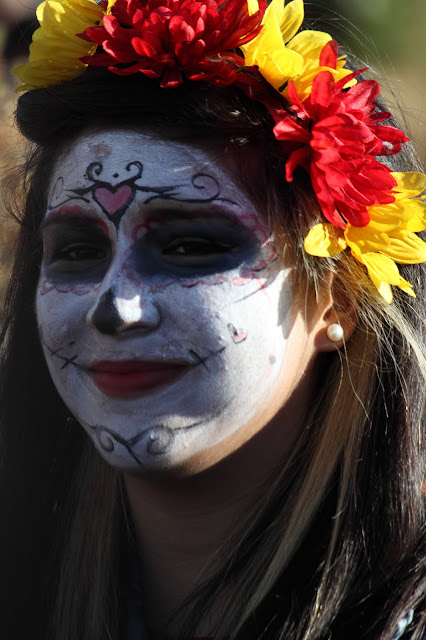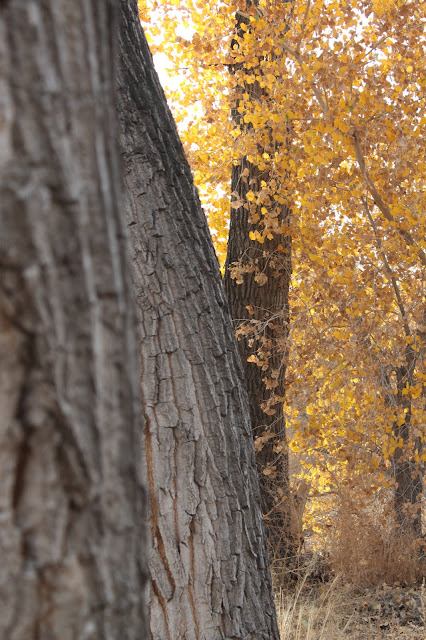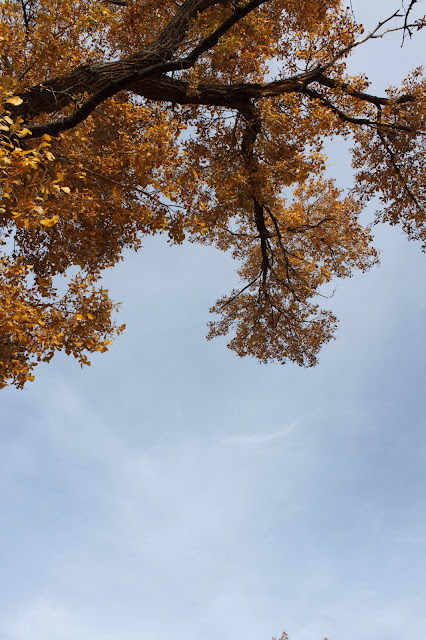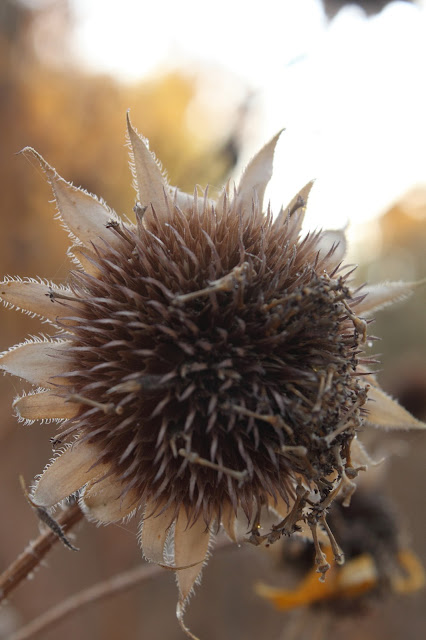I've found Christmas in New Mexico especially magical. The scent of burning pinon is in the air, luminarias go up, and everyone makes biscochitos (a delicious cookie best made by your best Mexican friend, if you don't have a Mexican grandma. It's actually the state cookie!).
Christmas celebrations begin the first weekend in December and culminate on Christmas eve.
My favorite early event is Christmas at Kuaua - the Tiwa pueblo Indian ruin at Coronado State National Monument in Bernalillo. The pueblo ruin is adorned with luminarias or farolitos ("little fires") and there is a bonfire with traditional Tiwa people dances. It's an amazing experience.
 |
| Farolitos at Kuaua |
Luminarias were reportedly used ages ago as a type of streetlight to light the way for pilgrims coming to Christmas Eve mass. However this story is argued against. Some argue that the luminarias are from Las Posadas (a 9 day holiday celebrated throughout Mexico and Guatemala that is a reenactment of Mary, Joseph and Jesus' journey). In fact, the terms "luminaria" and "farolito" are also a source for argument. It seems that they refer to the same thing but there is a regional preference. "Farolito" is used in Northern New Mexico and "luminaria" is used in the southern part of the state. Farolito means "little light" while "luminaria" once referred to a specific vigil of light that isn't celebrated with much fanfare any more.
Either way, people use these paper bags made heavy with sand and candles as people in the US use Christmas lights. Especially on Christmas Eve.
Albuquerque has at least three very famous displays of luminarias on Christmas Eve. People flock from all over to attend the display in Old Town (a part of Albuquerque existing since 1793) and to attend mass at San Felipe de Neri church.
This display is exceptionally popular. I attended in 2011 and to my dismay there were so many people that you saw more people than luminarias. This year I took some advice from my adopted abuelita and visited Old Town after midnight. To my amazement, luminarias were still burning strong and very few people were out. It was amazing.
 |
| Old Town Plaza Luminarias |
 |
| Luminarias at San Felipe de Neri |
 |
| Old Town Albuquerque on Christmas Eve |
 |
| Luminarias |
 |
| A patio in Old Town decorated with luminarias on Christmas Eve. |
Another famous spot for luminarias is the Country Club.
The Country Club is essentially across the street from Old Town. Many famous movies, and television shows, have filmed in the Country Club neighborhood (*ahem - Breaking Bad*). The area is rich, in money, grass, luminaria display, and police presence.
It is just as popular as the Old Town display. Again, acting on recommendation, I visited after most people had gotten too cold to go out. It was marvelous.
 |
| Country Club Luminarias |
However, the third spot for luminarias is my favorite.
There's a neighborhood known as Ridgecrest. There is a huge boulevard in the neighborhood. The luminarias stretch on for winding blocks and blocks. It's best to park the car, get out, and walk the nearly 3 miles. Many houses have traditional Christmas lights as well and even a few people out dressed as Santa or reindeer.
It's so much fun that I forget to take photos. But some of the best displays are here.
 |
| Ridgecrest Neighborhood luminarias |
Now just because this post has been about luminarias in New Mexico doesn't mean that there aren't typical Christmas light displays. Ohhhh no! There are MANY of those too. Some extravagant ones even.
I've even created a Google map charting the best over the top Christmas light displays (http://goo.gl/NqsxE).
Here are some of those.
 |
| The Gingerbread House |
 | |||
| Lights in the South Valley |
I hope you enjoyed your Christmas in Albuquerque. :)



























